#we also really liked marken! it's an island close to Amsterdam and the way there by bike is really nice! the lighthouse is cool
Text
Accidentally hit on a cis guy but it's ok he's cool💕
#istg probably all the other people i wanted to ask for their numbers were trans but like. we had SUCH a good conversation and he was#genuinely really cool so like. i didn't have time to ask the others. but damn this was so fun#''hit on'' got the number of. but you know what I need#*mean#we had so much fun#if y'all ever go to Amsterdam here's my recs#vrankrijk <- France but with a v not f GREAT squatted bar on Wednesdays they have queer evenings but#i can also recommend the punk Friday!!#vondelbunker: sadly not squatted but an anarchist place with free concerts! so fucking good and fun and the people are cool#ndsm: idk how to describe this but there was a free art exhibition there (amazing) and a tattoo convention (mediocre) and the building is#really cool with lots of street art! inside there are a bunch of workshops? the ferry goes there from the main train station also for free#adm? we didn't actually manage to go here but it sounds really cool again a street art place a bit outside of Amsterdam#it was recommended by an older punk and i bet it's super cool#Haarlem apparently??? it's a different city but everyone says to go there#we also really liked marken! it's an island close to Amsterdam and the way there by bike is really nice! the lighthouse is cool#saarein: a queer bar. the vegan food there is fucking fantastic#the zoo. no need to go in it's just a normal zoo. the part that's AMAZING is the free sitting area where the flamingos are#they let the Papageien fly free so you can see those there too!#there's also a really good free toilet there#botanical garden with the butterfly house. AUTISM space#also autism space. florescent Art Museum.#Incredible#in general the area close to saarein and the museum is super nice and artsy!!! there was a REALLY cool bookshop there with a cat#wils guide to Amsterdam
6 notes
·
View notes
Text
Day 181: Wind, Wood, and Cheese—A Crash Course Through Dutch Countryside
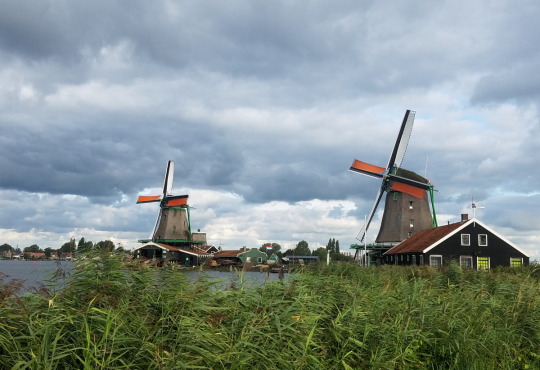
For our first real day in Amsterdam, Jessica had picked out a half-day tour of the scenic countryside of North Hollands, including the incredibly picturesque Zaanse Schans. To be honest, I wasn’t expecting very much out of the tour beyond some pretty scenery, but I couldn’t have been more pleasantly surprised with how it turned out.
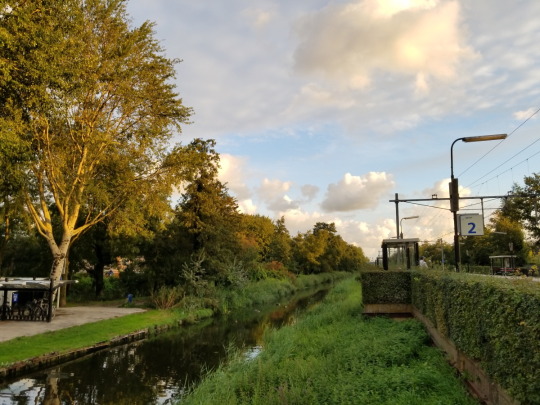
Our Airbnb was a pleasantly short stroll from the train station. As we waited, Nic and I captured a nearby gym in Pokemon Go. Jessica was not amused.
There wasn't anywhere to scan our smartphone tickets when we boarded the train, but we did need them to get out of Amsterdam Central. The meeting point for our tour was just outside the station, and we had given ourselves enough time to pick up some coffee and pastries for breakfast from a station café. Luckily, as it turned out, we got them to go.
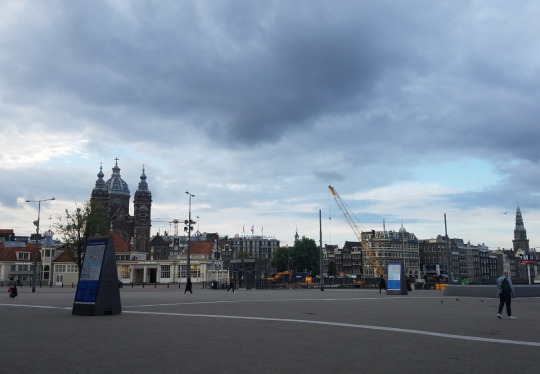
When we arrived at the tourist information center that Google Maps had directed us to, there was no one else there. It was still early, and everything was closed. Double-checking our phones, we realized that we were actually supposed to meet at a storefront several blocks away. We chucked our pastries into our bags, speed-walked down the down main street, and got there just a few minutes late.
Everything seemed fine, though. This was a big-bus tour, unlike the smaller group tours that Jessica and I had tried to stick to before. Even though our tickets were timed, it seemed like they were taking people in at the door and sending out new groups every few minutes as they filled up.
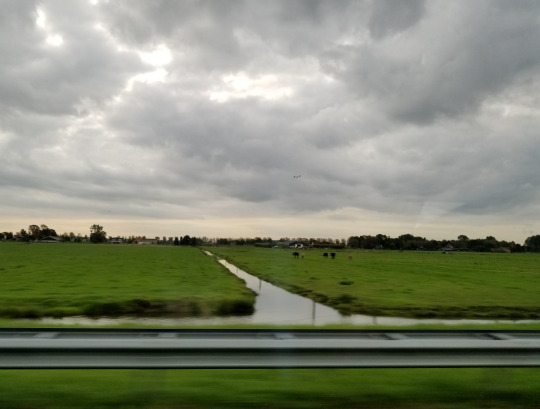
Our tour group was split into English and Spanish speaking sections. As we headed north towards the windmills, we learned through a prerecorded audio track about the significance of windmills in Dutch history.
There are a few things I’ve pretty much always known about the Netherlands: It is a small country, much of its land is below sea level, and for centuries it was one of the world’s greatest trading empires. And windmills played a critical role in that story.
Back in the Middle Ages, the Dutch seized upon an ancient technology known as Archimedes' screw. A brilliantly simple device, the screw can drain vast areas of wetland with just three basic ingredients: a pipe, a corkscrew, and a way to keep the corkscrew turning.
That last ingredient had always been the tricky one. Turning such a massive corkscrew was labor-intensive, and it had to be done more-or-less continually in order to keep the drained land from flooding again. A German engineer figured out how to reduce the workload with a more efficient crank mechanism, but it still required human hands and sweat to operate. Hands that had to be paid, and sweat that needed to be replenished.
It was the Dutch, appropriately enough, who came up with a way to get the work done for free. The Netherlands, with its flat plains and reliable wind, had always been prime territory for windmills. When Dutch engineers figured out use the turning of a windmill to power the turning of a water screw, the rest was just a matter of logistics. The water was pumped up into dikes---tall levees with canals running down the middle of them. Water from one dike would be pumped up into a larger and taller dike, until finally it was pumped into an above-sea-level dike that flowed out to the Atlantic.
Using this technology, the Dutch were able to double the size of their country without having to take land from anyone else but the sea (There’s a famous saying in the Netherlands: “God created the earth, but the Dutch created Holland.”)
While electric pumps have now replaced the windmills, the job is still the same. Without continual pumping to keep the land dry, half of the Netherlands would be lost back to the sea. One article I found claimed that if all the pumps stopped, half the country would be underwater within a week.
But that is just the first half of the story. To find out how windmills took a country they had literally created and transformed it into a global trade empire, we had to make our first stop.

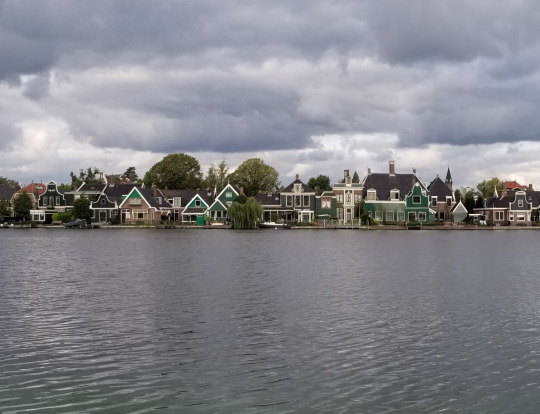
Zaanse Schans is a historic neighborhood just north of Amsterdam, just over a mile from our Airbnb. It is one of the most idyllic and iconic places in the Netherlands, with beautiful old homes and windmills. In the 19th century, it attracted painters like Monet. Today, it attracts throngs of tourists.
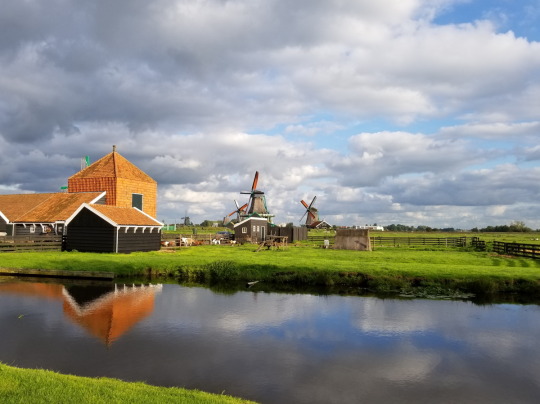
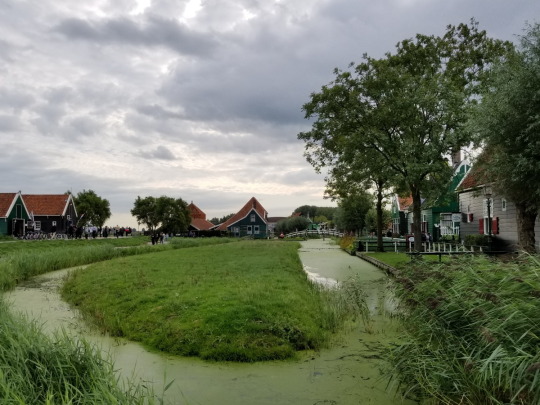
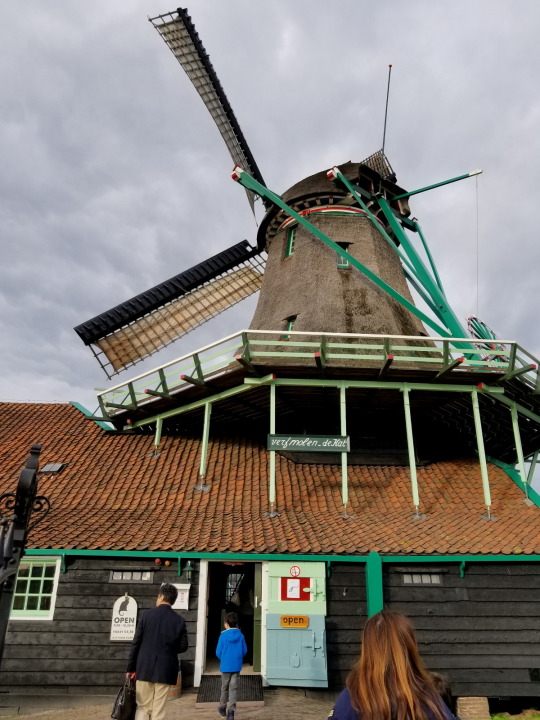
After passing through a quaint old-timey town, we were given a tour of one of the mills by one of the millers (or rather sawyers) who actually works there.

We learned that in the 1600s, the Dutch invented a new type of gearbox that transformed the rotating movement of a windmill into an up-and-down motion---perfect for attaching wood saws to.
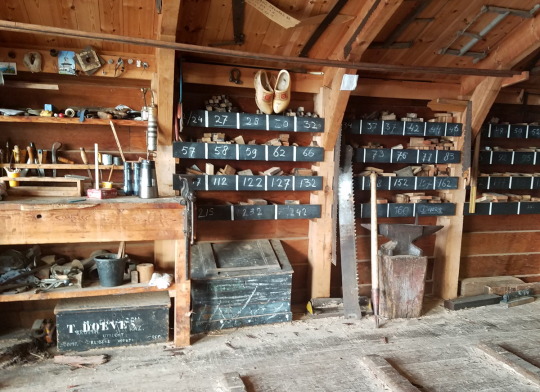


According to our guide, this was the true first step in the Industrial Revolution. With the vast fields of wind-powered saws in the west and dense forests in the east, the Netherlands was perfectly positioned to process lumber at a staggering rate–more than double France and England combined. Within a few decades, they had raised an unparalleled trading fleet that sprawled across every corner of the globe.
The resulting Dutch Golden Age ushered in a century of incredible wealth, art, and culture to the Netherlands.
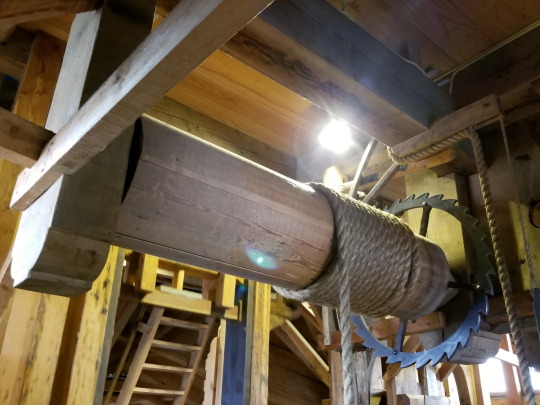

The windmills were really clever. They even used a winch system that automatically dragged the logs up out of the canals and through the saw blades. (The logs were kept soaking in the canals before cutting in order to minimize splintering.)
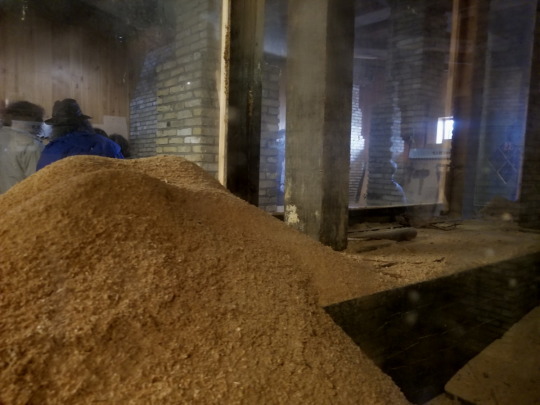
Any wood that wasn’t suitable for lumber became firewood, and sawdust was collected and sold for barn flooring and insulation.
At one point, thousands of windmills peppered the fields of Holland. Almost all have been demolished, but a handful have been preserved, restored, or even rebuilt from scratch according to historical specifications.
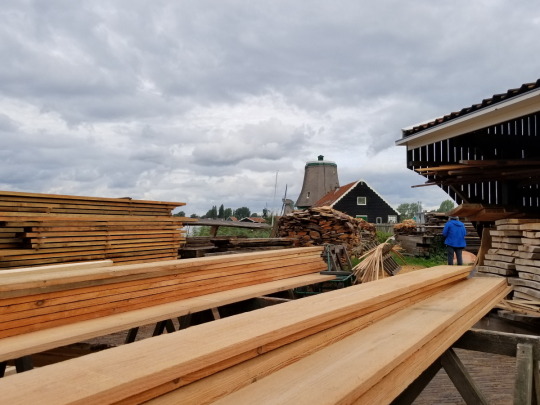
The sawyer who showed us around the mill explained that it is not just a preserved mill---it is a working mill. They really do cut lumber, and all the lumber they cut is ordered for real construction projects. Windmills are delicate creatures, and they can start to break down after just a week or two of disuse.
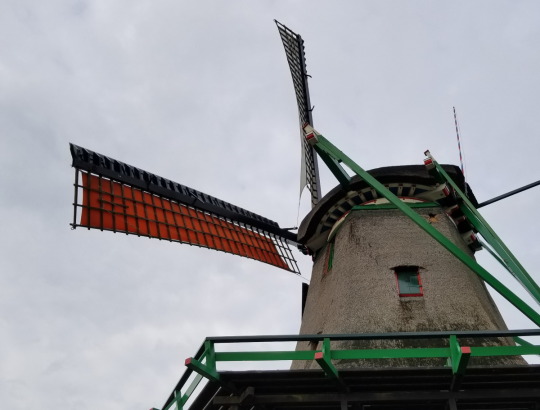
One thing I found especially fascinating was that the sails of the windmill were really that---sails. The blades are intentionally designed so that every morning the millers can decide how much or how little cloth to put on them. If the wind is low, full sails are raised on all four blades. If the wind is high, only two or three might be raised. This lets them control how fast the blades turn regardless of how much wind there is.
We also learned that old-fashioned sawyers wore wooden shoes as protection from the saw blades.
Speaking of wooden shoes, that was the theme of our next stop.

After running back to catch our bus, we headed out to the town of Marken. Once an island, it is now connected to mainland Holland by a long, narrow dike. A quaint time-warp village a bit like those in the Cotswolds or the Rhineland, it's the sort of place tourists go to see old-fashioned buildings and people dressed in old-fashioned clothes. One of the main attractions, and the only one we had time to see, is a wooden shoe factory.


Delightfully, we learned that the Dutch word for wooden shoes is “klompen”---as in, clomping around in heavy wooden shoes.)
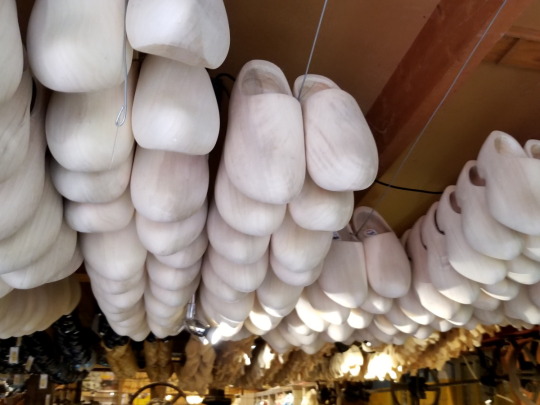
Again, I was expecting this to be cheesy tourist trap. And, to be fair, it kind of is. But it was also genuinely interesting. We learned that wooden shoes were quite practical in their time. For field hands working in the marshy Dutch soil, wooden shoes were far more protective than cloth shoes. And thanks to the windmill revolution we'd just learned about, wood was far more plentiful than leather.
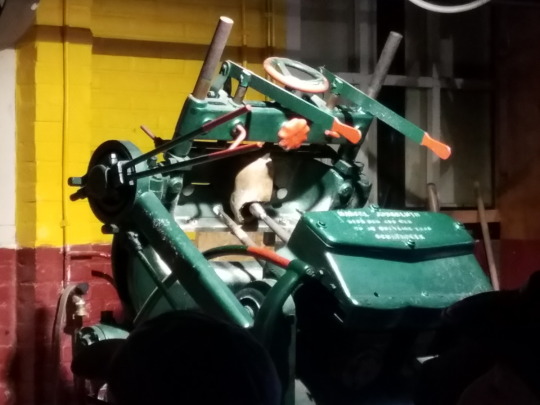
The way the shoes are produced nowadays is also fascinating. The klompenmakers take two industrial lathes and join them together so that whatever one lathe does, the other one copies it exactly. One lathe is equipped with an ordinary carving tool, while the other is given a harmless blunt tip. The klompenmakers than mount a completed shoe on the blunted lathe and a wooden blank on the sharp lathe. The sharp lathe is then turned on, while the blunted lathe is kept off. By rubbing the blunted lathe around the inside and outside of the completed shoe, the sharp lathe turns the wooden blank into a perfect replica shoe. Then, by switching the lathes to mirror each other instead of paralleling each other, they can create a perfectly matched shoe for the other foot.

All the while, the klompenmaker gave an impressively entertaining monologue, effortlessly jumping between five different languages and joking with individual tourists in each. If there's one stereotype about a European country that I'm still willing to hold onto after these six months, it's that the Dutch are born linguists.
After the presentation was over, we got to try on some clogs. I was pleasantly surprised to find that weren't nearly as uncomfortable as I was expecting. They have no cushioning, so you’d want to wear them with thick woolen socks, but the insides are fairly well contoured to match a typical human foot.

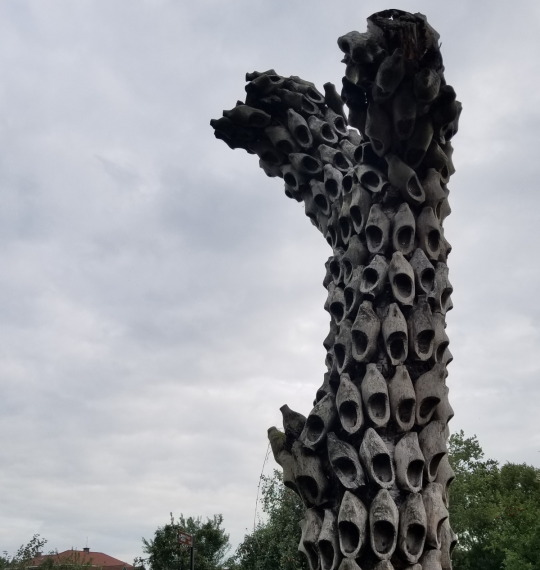

After buying some souvenirs and taking some more pictures of the kitschy clog-related artwork, we were busked onward toward the Marken docks. From there we took a boat ride over to the mainland town of Volendam, a larger but still rustic Dutch port town.

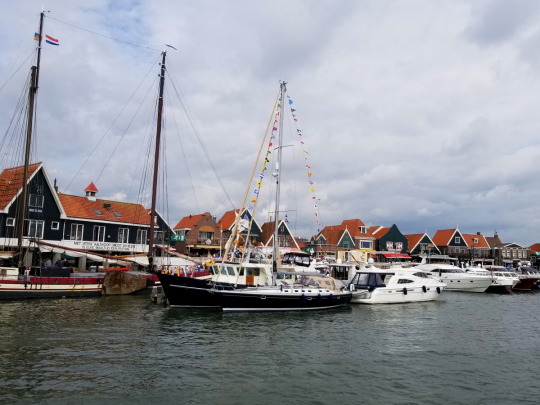
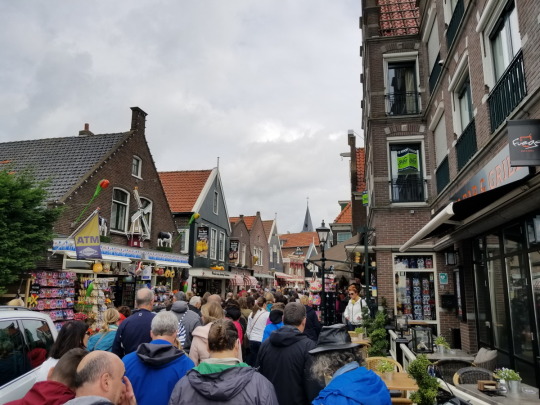
Our first stop was the Cheese Factory Volendam. It was very much like the Chocolate museums in York and Bruges, but with cheese.
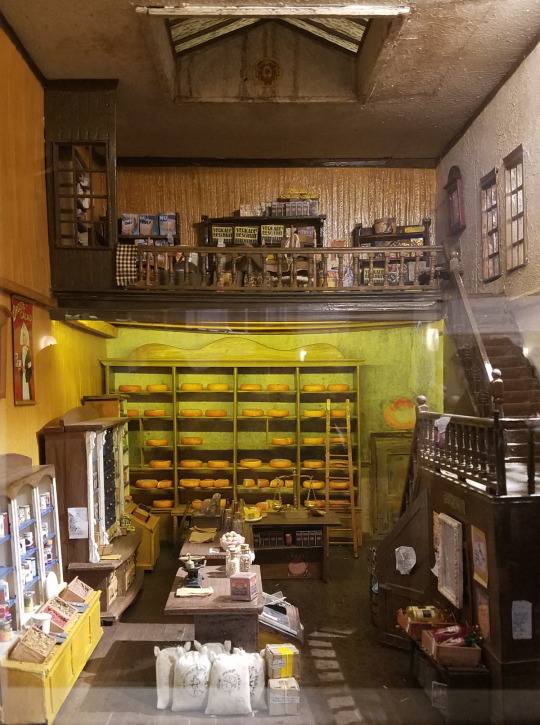
It even had dioramas!
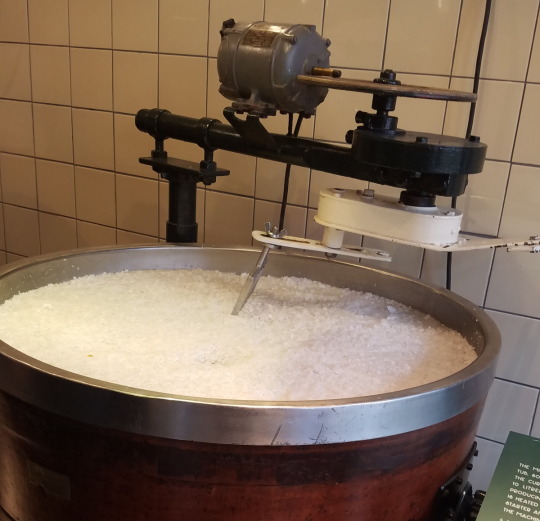


After a quick walk through a series of displays showing how Dutch cheese is made, we got to see a live presentation. While Volendam is part of the famous Edam cheese-making region, the Factory focused on Gouda-style cheese, which was fine by me.
After the presentation, we were let loose to wander and taste a wonderful variety of different Goudas. There was a very young cheese, just four weeks old. It was mild, soft, and creamy---very much to my taste. There was also an "extra old" cheese that had been aged for four years. It was stronger and harder---good, but not so much to my taste.
There was also a delicious assortment of seasoned cheeses. There was smoked Gouda, of course, as well as herb Gouda, red pepper Gouda, and even cumin Gouda. I was so impressed with the cumin Gouda that I had to buy a wheel before we left. But possibly even more impressive than the cumin Gouda was the smoked goat's-milk Gouda. I've never been a fan of the tangy character that goat cheese has, but the creaminess and smokiness of this cheese balanced it out spectacularly. If you ever have a chance to try some, even if you don't normally like goat cheese, I would highly recommend it.
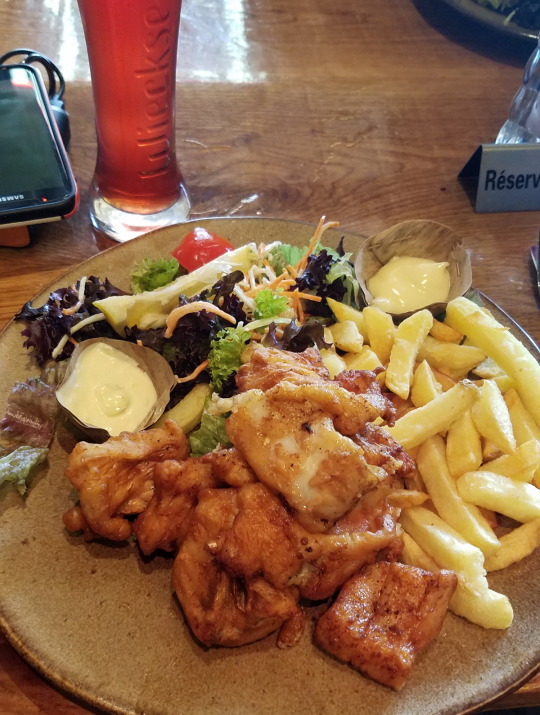
After the cheese factory, we had a break for lunch. We followed our guide's recommendation and went over to a nearby restaurant that specialized in kibbeling, a Dutch version of fish and chips. The fish is cut up into smaller pieces before it is fried, and they practically melted in our mouths. As much as I loved our fish and chips in Britain, I would take that kibbeling over any of them.
All the while, we were inundated with a tremendous noise of raucous crowds and blaring music. While Volendam is allegedly a very quiet town most of the time, we happened to come in the middle of a four-day folk festival filled with dawn-to-dusk drinking, singing, and general merry-making. A miniature Dutch Oktoberfest, if you will.
After wandering through the overwhelming crowds for a bit, we rendezvoused with our tour group for our next stop---a bakery specializing stroopwafels.

I'd never heard of stroopwafels before, but now that we're back, I feel like I see them everywhere. Unlike Belgian waffles, these were small, thin, and crunchy. And most importantly, they are filled with caramel! They are traditionally taken with coffee or tea and small enough to place on top of the cup like a lid. The steam from the drink heats and softens the stroopwafel, making it even tastier.

Naturally, we got to see a demonstration of how to make a stroopwafel. The process is as simple as could be: you make a waffle, split it in half with a knife, spread the filling---caramel, honey or chocolate---on the inside of one of the halves, then put the halves back together like a sandwich. One of the other people on our tour got roped into helping the shopkeeper make one in front of us. When called on, his first reaction was to look helplessly down at the bag in his hands and protest: “But I’m holding cheese!”

Before heading upstairs into the shop, we made sure to snap a picture of the original recipe hanging on the wall.

After buying a box or two to take home with us, we walked through the town to meet up with our bus, which took us back to Amsterdam.
Overall, it was a fun tour, and I enjoyed it more than I was expecting to. It was certainly cheesy---in more ways than one---but we also learned a lot without having to do any of the planning work ourselves. Really, what more could we ask for?
We still had most of the afternoon left, so we decided to stroll around for a bit and enjoy the sights of Amsterdam's city center---starting with one of our absolute must-sees.
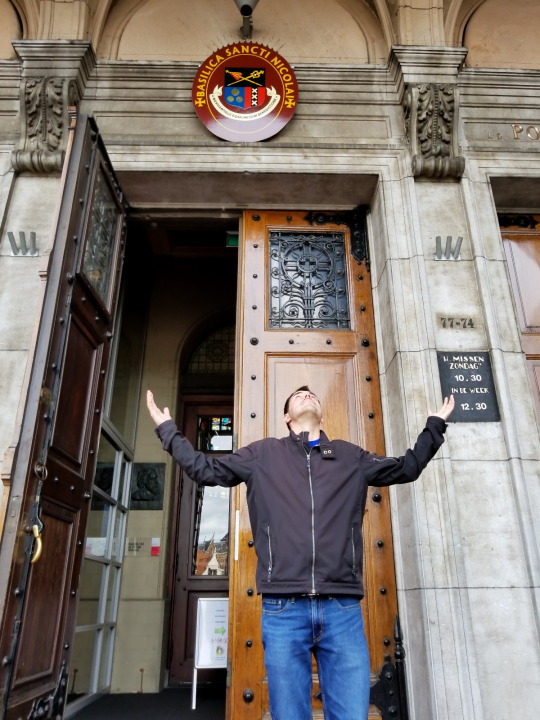
The Basilica of St. Nicholas is “only” a hundred years old or so, but it is still very beautiful. Thanks to what must have been very clever design, they were able to make it very bright and airy inside despite having relatively few windows.
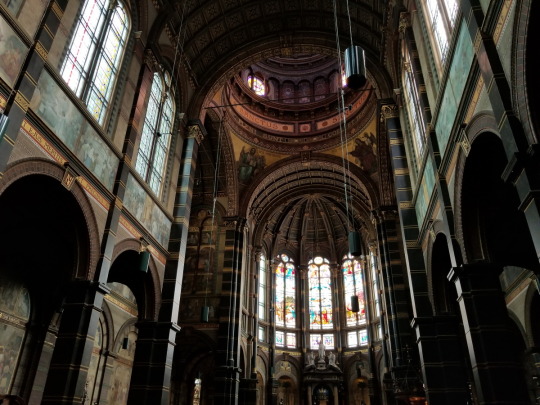
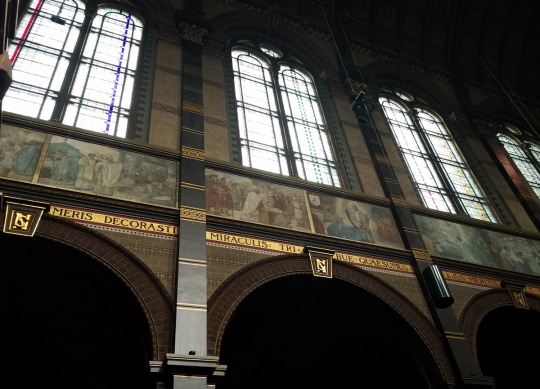
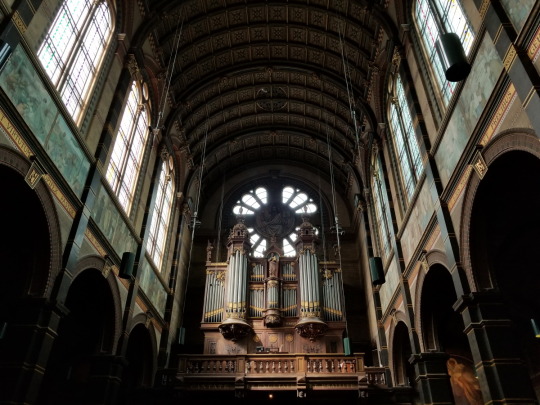
After leaving Nic's basilica, we walked up and down the main canals of the city center, taking in the sights, sounds, and---yes---smells. We didn’t enter any of the many “coffee shops” that we passed, but judging by our noses, everything everyone says is true.
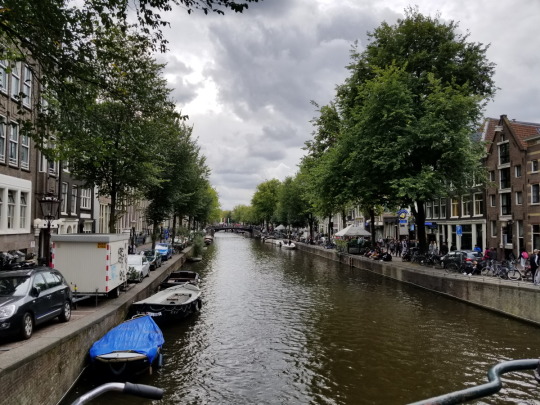
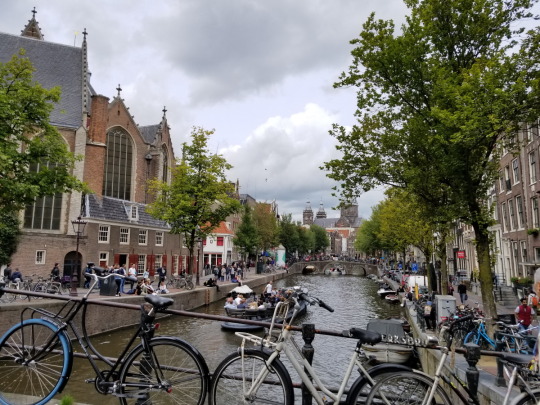
We didn't quite go into the red light district itself, but we got close enough to find some rather interesting storefronts that certainly wouldn't have passed any public decency regulations back in the States.
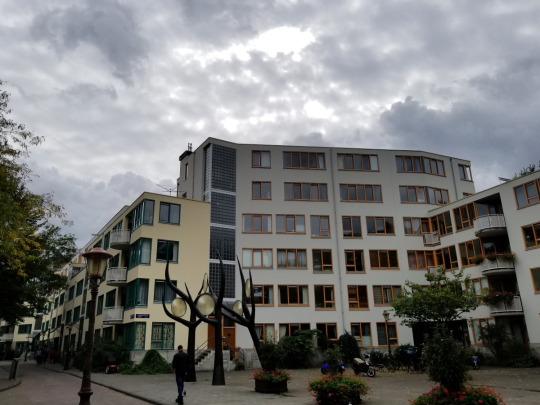
At the south end of the city center, we came to the University of Amsterdam. Nic and Jessica had been hoping to buy a university sweatshirt for their dad, but while this campus in the heart of Amsterdam had been the University's original location, the bulk of it is now in a much larger campus on the outskirts. There weren't any university shops on the old campus that we could find, just a lot of sleepy buildings.
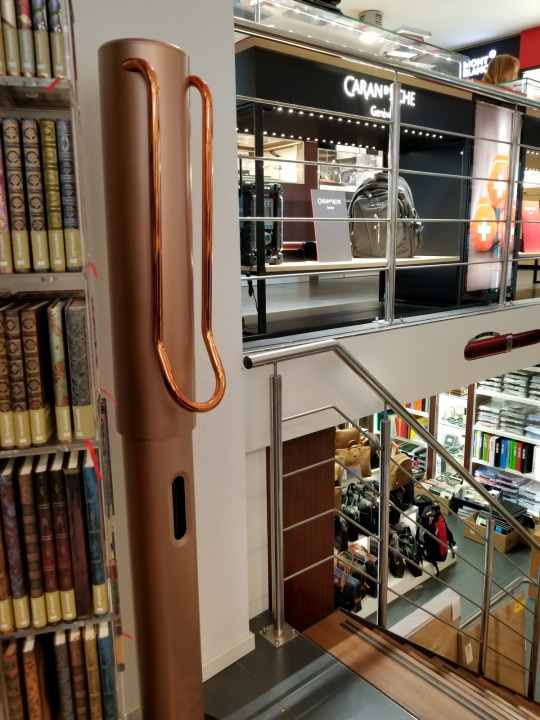
Before we headed back up the city's main drag, I insisted on stopping by a pen store---P.W. Akkerman. If you don't already know, I'm a bit of a pen fanatic. There is a P.W. Akkerman store in the Hague that I was dying to visit, but this satellite store in Amsterdam was a nice way to tide myself over. Nic and Jessica were more than happy to let me wander in, but I don't think they understood exactly what they were getting into. After a good long while of perusing the shelves on three different floors, I found them waiting patiently by the door, more than ready for us to continue onward.


The main street running up through the city center is vast and impressive. And the buildings flanking it are also suitably grand for the economic epicenter of a former trade superpower.

Running all the way up the street was a series of ornate street organs playing impressively complex carnival-esque tunes. We also passed a blade juggler trying to convince his modest crowd that it was only fair that they each give him ten Euros for the upcoming performance.
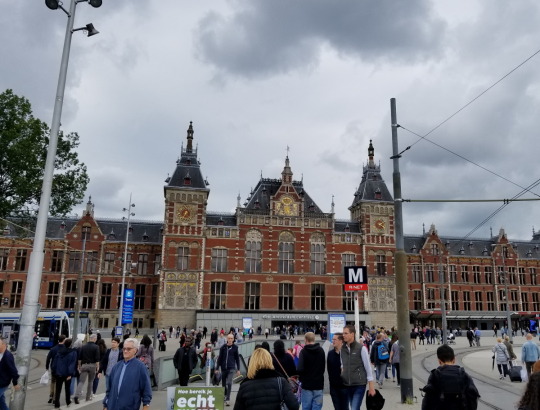
Finally, we made it back to the central train station---a beautiful structure in its own right that we hadn't really had time to appreciate before---and headed back home for a relaxing evening. Tomorrow, we'd be heading back into town for a deep dive into one of our favorite sites in the city: the Maritime Museum.
#180abroad#amsterdam#netherlands#north holland#volendam#cheese#clogs#wooden shoes#history#windmills#but i'm holding cheese!
0 notes